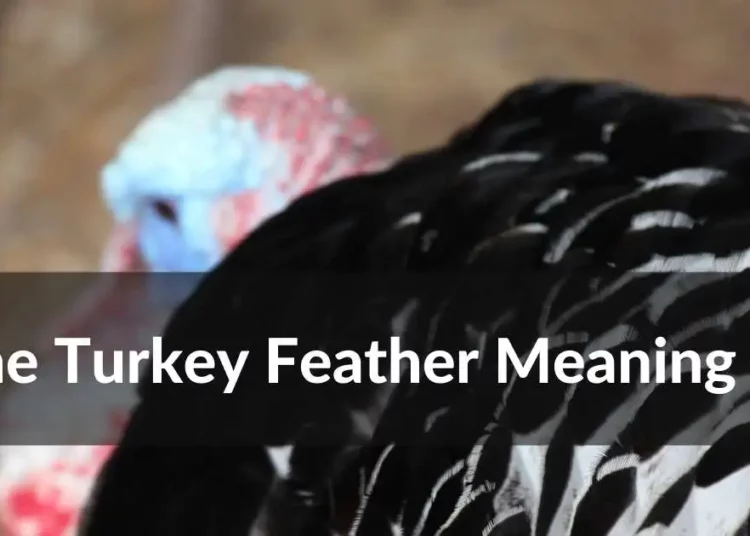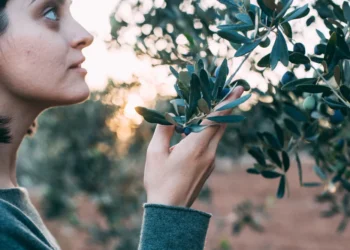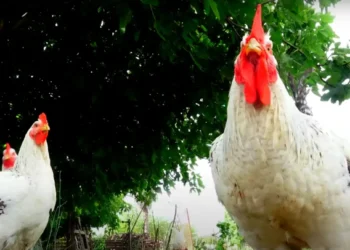The Significance of Turkey Feathers in Native American Culture
Introduction
Turkey feathers have played an important role in Native American culture for centuries. They were prized for their beauty, durability, and versatility, and were used in a variety of ways by different tribes across North America. From clothing to spiritual ceremonies, turkey feathers were an integral part of Native American life.
Traditional Use of Turkey Feathers in Native American Clothing
Native Americans used turkey feathers for decoration on their clothing and accessories. The feathers were often dyed bright colors and arranged in intricate patterns to create beautiful designs. They were also used as fringe on clothing or as adornments on headdresses.
In addition to their decorative use, turkey feathers had practical functions as well. They were used as insulation in winter clothing and as fans to keep cool during the hot summer months. The soft downy feathers from the breast of the turkey were particularly useful for these purposes.
The Symbolism of Turkey Feathers in Native American Spirituality
Turkey feathers held great spiritual significance for many Native American tribes. They were believed to have healing powers and were often used in sacred ceremonies and rituals. The feathers represented the connection between humans and the natural world, and were seen as a symbol of gratitude and respect for all living things.
Different tribes had different beliefs about the specific spiritual properties of turkey feathers. For example, some believed that they could ward off evil spirits or protect against illness, while others saw them as a symbol of abundance and prosperity.
Rituals and Ceremonies Involving Turkey Feathers
Turkey feathers played a central role in many Native American rituals and ceremonies. One example is the Eagle Dance performed by the Hopi tribe of Arizona. During this ceremony, dancers wear elaborate costumes adorned with eagle or turkey feathers, which are meant to symbolize the power of the bird.
Another example is the Sweat Lodge Ceremony, which is practiced by many tribes across North America. During this ceremony, turkey feathers are used to fan hot stones and create steam, which is believed to purify the body and spirit.
Historical Use of Turkey Feathers for Hunting and Survival
Turkey feathers were also used for practical purposes such as hunting and survival. Native Americans used turkey feathers to make arrows, which were essential for hunting game. The feathers provided stability and accuracy to the arrow’s flight, making it more effective in taking down prey.
In addition to their use in hunting, turkey feathers were also used for bedding material in teepees or other shelters. The soft downy feathers from the breast of the turkey made excellent insulation, keeping people warm during cold winter nights.
Medicinal Uses of Turkey Feathers
Turkey feathers were believed to have medicinal properties by some Native American tribes. They were often used in traditional healing practices such as massage or acupuncture. The sharp quills on the end of each feather could be used to stimulate specific pressure points on the body, promoting healing and relaxation.
Additionally, turkey feathers were sometimes burned as part of a smudging ceremony. This involved lighting a bundle of herbs or other materials (such as sage) and using a turkey feather to fan the smoke over a person or object. It was believed that this would cleanse negative energy and promote spiritual balance.
The Meaning and Symbolism of Different Colors of Turkey Feathers
Different colors of turkey feathers held different meanings for different tribes. For example:
– White feathers symbolized purity, innocence, and spirituality.
– Black feathers represented death or mourning.
– Brown or tan feathers symbolized grounding and stability.
– Red feathers represented courage, strength, and vitality.
– Blue or green feathers symbolized peace and harmony with nature.
These meanings could vary depending on the specific tribe or cultural context.
Incorporating Turkey Feathers into Modern Art and Fashion
Turkey feathers continue to be used in modern art and fashion, often as a way to pay homage to Native American culture. They are used in jewelry, clothing, and accessories such as hats or handbags. Some artists use turkey feathers to create intricate works of art, such as feather paintings or sculptures.
However, it’s important to note that the appropriation of Native American culture (including the use of traditional symbols like turkey feathers) by non-Native people is a controversial issue. Many Native Americans feel that their cultural heritage is being exploited for profit without proper acknowledgment or respect.
Superstitions and Myths Surrounding Turkey Feathers
There are many superstitions and myths surrounding turkey feathers. For example, some people believe that finding a turkey feather is a sign of good luck or that carrying one with you will protect you from harm. Others believe that burning turkey feathers will bring bad luck or cause illness.
In some cultures, it’s believed that seeing a flock of turkeys is a sign of abundance and prosperity, while others see them as an omen of death or misfortune.
The Molting Process of Turkeys and What Happens to Old Feathers
Turkeys go through a molting process each year where they shed their old feathers and grow new ones. This typically happens in the late summer or early fall. During this time, turkeys may become more reclusive as they lose their ability to fly with ease.
Once the old feathers have fallen out, they can be collected for use in various ways (such as decoration or insulation). However, it’s important to note that wild turkeys are protected by law in many areas and collecting their feathers without proper permits can result in fines or legal consequences.
Anatomy of a Turkey Feather Compared to Other Bird Species
Turkey feathers have a unique structure compared to other bird species. They have a flat, broad vane (or surface area) that helps them glide through the air with ease. The feathers are also asymmetrical, meaning that one side is longer than the other. This helps to reduce drag and improve flight efficiency.
In addition, turkey feathers have sharp quills on the end that can be used for defense or as a tool for grooming.
Identifying Different Types of Turkey Feathers by Size and Shape
There are several different types of turkey feathers, each with their own unique size and shape. Some common types include:
– Primary feathers: These are the largest feathers at the end of the wing that provide lift during flight.
– Secondary feathers: These are smaller feathers located closer to the body that help with maneuverability.
– Tail feathers: These long, narrow feathers make up the turkey’s distinctive fan-shaped tail.
– Covert feathers: These small, fluffy feathers cover the base of larger wing and tail feathers.
By identifying these different types of feathers, researchers can learn more about how turkeys fly and how they use their feathered anatomy in different contexts.
Famous Historical Figures or Events Involving the Use of Turkey Feathers
There are many famous historical figures or events involving the use of turkey feathers. For example:
– Benjamin Franklin famously suggested that the wild turkey should be America’s national bird instead of the bald eagle.
– During World War II, soldiers used turkey feather-filled sleeping bags as part of their survival gear.
– Native American leader Geronimo was known for wearing elaborate headdresses adorned with turkey and eagle feathers during ceremonies.
These examples demonstrate how turkey feathers have played a significant role in both American history and global culture.
Raising Turkeys for Meat and Feather Production: Environmental Impact
Raising turkeys for meat and feather production can have a significant environmental impact. Large-scale turkey farms can contribute to air and water pollution, as well as the depletion of natural resources such as land and water.
Additionally, the use of antibiotics and other chemicals in turkey farming can have negative effects on human health and the environment. Some people choose to raise their own turkeys or purchase meat from local, sustainable sources to reduce their environmental impact.
Conservation Efforts to Protect Wild Turkeys and Their Habitats
Wild turkeys were once endangered due to hunting and habitat loss, but conservation efforts have helped to bring their populations back up. Organizations such as the National Wild Turkey Federation work to protect wild turkey habitats, restore degraded ecosystems, and promote sustainable hunting practices.
By supporting these conservation efforts, individuals can help ensure that wild turkeys continue to thrive in their natural habitats for generations to come.
Traditional Use of Turkey Feathers in Native American Clothing
Turkey feathers have been used for centuries by Native Americans in their traditional clothing. The feathers were often incorporated into headdresses, capes, and other garments worn during important ceremonies or events. Each feather was carefully chosen for its size, shape, and color to ensure that it would complement the overall design of the garment.
In addition to their aesthetic value, turkey feathers also served a practical purpose. They were used to provide insulation and protection from the elements, especially during cold winter months. The soft downy feathers were often used as a lining for clothing or blankets, while the larger flight feathers were used to create warm outerwear.
The Significance of Feather Placement
The placement of feathers on a garment was also significant in Native American culture. For example, eagle feathers were reserved for use by tribal leaders and warriors because they symbolized strength and courage. Similarly, turkey tail feathers were often used on garments worn by hunters or those seeking spiritual guidance because they represented abundance and prosperity.
The Role of Gender in Feather Use
Gender also played a role in feather use among Native Americans. Men typically wore more elaborate feathered headdresses and garments than women, as they were considered to be the protectors and providers for their families and tribes. Women often incorporated smaller feathers into their clothing or jewelry as a way to honor nature and connect with their spirituality.
The Symbolism of Turkey Feathers in Native American Spirituality
Turkey feathers hold great spiritual significance in many Native American cultures. They are believed to represent abundance, fertility, and good fortune. In some traditions, turkey feathers are also associated with the spirit world and are used in purification rituals or as offerings to ancestors.
The Role of Turkey Feathers in Dreamcatchers
One common use of turkey feathers in Native American spirituality is in the creation of dreamcatchers. These intricate woven webs are often adorned with feathers to help capture and filter out bad dreams, while allowing good dreams to pass through. Turkey feathers are a popular choice for dreamcatchers because they symbolize abundance and can help attract positive energy.
The Use of Turkey Feathers in Prayer Sticks
Turkey feathers are also commonly used in prayer sticks, which are small bundles of herbs or other materials that are tied together and used in spiritual ceremonies or rituals. The feathers serve as a way to carry prayers or messages to the spirit world, and are believed to help connect the user with their ancestors or higher power.
Rituals and Ceremonies Involving Turkey Feathers
Turkey feathers play an important role in many Native American rituals and ceremonies. They are often used as offerings or decorations during sacred events, such as sweat lodges, vision quests, or sun dances.
The Use of Turkey Feathers in Sweat Lodges
In sweat lodges, turkey feathers may be used to fan hot rocks or create a cooling breeze for participants. They may also be placed on altars as offerings to the spirits or used as part of purification rituals.
Turkey Feathers in Vision Quests
During vision quests, turkey feathers may be worn as part of ceremonial clothing or used to decorate the sacred space where the quest takes place. They may also be carried by participants as a symbol of their connection to nature and their spiritual journey.
The Role of Turkey Feathers in Sun Dances
Sun dances are another important ceremony that often involves the use of turkey feathers. Participants may wear feathered headdresses or carry fans made from turkey tail feathers during the dance. The feathers represent strength, courage, and connection to the spirit world.
Overall, turkey feathers hold great cultural, spiritual, and practical significance in Native American traditions. From their use in traditional clothing to their role in sacred ceremonies, these feathers continue to play an important role in many aspects of Native American life.
Historical Use of Turkey Feathers for Hunting and Survival
The Role of Turkey Feathers in Native American Culture
Turkey feathers have long been used by Native American tribes for hunting and survival. The feathers were often used to make arrows, as they provided a lightweight yet sturdy material that could be easily shaped and fletched. Additionally, turkey feathers were used to create headdresses and other ceremonial attire, symbolizing the bird’s importance in tribal culture.
The Use of Turkey Feathers by Early European Settlers
When early European settlers arrived in North America, they quickly recognized the value of turkey feathers for their own purposes. The feathers were used to stuff pillows and mattresses, as well as for quill pens and writing implements. They were also traded with Native Americans for goods such as furs and food.
Turkey Feathers in Modern Hunting Practices
Today, turkey feathers are still commonly used in hunting practices. The use of turkey decoys with real or synthetic feathers is a popular strategy among hunters looking to attract wild turkeys. Additionally, turkey feathers are often used to create fly-fishing lures due to their lifelike appearance and movement in water.
Medicinal Uses of Turkey Feathers
Turkey Feather Tea for Respiratory Issues
In traditional Chinese medicine, tea made from turkey feathers has been used to treat respiratory ailments such as asthma and bronchitis. It is believed that the properties of the feather help to clear congestion in the lungs and airways.
Turkey Feather Poultices for Wound Healing
The antimicrobial properties of turkey feathers have also been utilized in wound healing practices. A poultice made from crushed turkey feathers can be applied directly to wounds or sores, helping to prevent infection and promote healing.
Turkey Feather Massage for Pain Relief
Some massage therapists incorporate turkey feathers into their practice, using them to gently stimulate the skin and underlying tissues. This can help to relieve tension and pain in the muscles, as well as improve circulation and lymphatic flow.
The Meaning and Symbolism of Different Colors of Turkey Feathers
White Turkey Feathers
In many cultures, white feathers are associated with purity, innocence, and spiritual enlightenment. In Native American culture, white turkey feathers are often used in rituals related to peace and harmony.
Black Turkey Feathers
Black feathers are often seen as a symbol of protection or warding off negative energy. They may also represent mystery or the unknown. In some Native American cultures, black turkey feathers were used in rituals related to death or mourning.
Brown Turkey Feathers
Brown feathers are associated with stability, grounding, and connection to nature. They may also represent comfort or nurturing energy. In some cultures, brown turkey feathers were used in rituals related to fertility or abundance.
Incorporating Turkey Feathers into Modern Art and Fashion
Turkey Feather Jewelry
Turkey feathers can be incorporated into jewelry designs such as earrings or necklaces for a unique and natural look. The iridescent colors of the feathers can add depth and interest to any piece.
Turkey Feather Clothing Accents
Feather accents on clothing have been popular for centuries. Adding turkey feather accents can give a bohemian feel to your outfit while still being chic.
Turkey Feather Home Decor
Turkey feathers can be incorporated into home decor by creating wreaths or adding them as accents on pillows or curtains. The soft texture of the feathers can add a cozy element to any room.
Superstitions and Myths Surrounding Turkey Feathers
Turkey Feathers as Good Luck Charms
In some cultures, turkey feathers are seen as a symbol of good luck. They may be carried in pockets or worn as jewelry to bring positive energy and good fortune.
Turkey Feathers as Bad Omens
On the other hand, some superstitions view turkey feathers as a bad omen. It is said that finding a single feather inside your home could mean that someone close to you will soon pass away.
Myths About the Powers of Turkey Feathers
Some Native American tribes believed that turkey feathers had the power to ward off evil spirits or protect against harm. Others believed that wearing a headdress made from turkey feathers would give them the ability to communicate with spirits or ancestors.
The Molting Process of Turkeys and What Happens to Old Feathers
Molting Cycles in Turkeys
Turkeys go through two molting cycles each year, during which they shed their old feathers and grow new ones. The first molt occurs in late summer or early fall, while the second occurs in late winter or early spring.
Uses for Old Turkey Feathers
Once turkeys have shed their old feathers, they can be used for a variety of purposes. The feathers can be collected for crafts or art projects, used for fly-fishing lures, or even composted for use in gardens.
Anatomy of a Turkey Feather Compared to Other Bird Species
The Structure of Turkey Feathers
Turkey feathers consist of several parts including the shaft, barbs, and barbules. The barbs branch off from the shaft and are held together by the barbules, which have tiny hooks that interlock with one another.
Differences in Feather Structure Among Bird Species
While all feathers share some basic structural components, there are differences in shape and size among different bird species. For example, flight feathers on birds such as eagles or hawks have a more rigid structure to aid in flight.
Identifying Different Types of Turkey Feathers by Size and Shape
Primary Feathers vs. Secondary Feathers
Turkey feathers can be divided into two main categories: primary and secondary. Primary feathers are longer and stiffer than secondary feathers, and are used for flight. Secondary feathers are shorter and softer, providing insulation for the bird.
Distinguishing Between Male and Female Turkey Feathers
Male turkeys (known as toms) have longer tail feathers than females (known as hens). Additionally, male turkey feathers may be more brightly colored or iridescent than female feathers.
Famous Historical Figures or Events Involving the Use of Turkey Feathers
The First Thanksgiving
The first Thanksgiving feast between Pilgrims and Native Americans is often associated with images of turkeys. While it is unclear whether turkey was actually served at the feast, it has become a symbol of American Thanksgiving traditions.
Benjamin Franklin’s Proposal for the National Bird
In a letter to his daughter in 1784, Benjamin Franklin proposed that the wild turkey should be chosen as the national bird of the United States rather than the bald eagle. While his proposal was not adopted, it highlights the significance of turkeys in American culture.
Raising Turkeys for Meat and Feather Production: Environmental Impact
Environmental Impact of Turkey Farming
Like all forms of agriculture, turkey farming can have an impact on the environment. Issues such as water pollution, soil degradation, and greenhouse gas emissions can arise from intensive farming practices.
Sustainable Turkey Farming Practices
However, there are also sustainable turkey farming practices that can minimize environmental impact. These include using organic feed, rotating pastures to promote soil health, and utilizing renewable energy sources.
Conservation Efforts to Protect Wild Turkeys and Their Habitats
Threats to Wild Turkey Populations
Wild turkeys face a number of threats to their survival including habitat loss due to development and climate change, hunting pressure, and disease outbreaks.
Conservation Strategies for Wild Turkeys
To protect wild turkey populations, conservation efforts focus on habitat restoration and protection, reducing hunting pressure during breeding seasons, and monitoring disease outbreaks. Additionally, education programs can help raise awareness about the importance of wild turkeys in maintaining healthy ecosystems.
In conclusion, the meaning of turkey feathers varies across different cultures and beliefs, but they generally symbolize abundance, protection, and spirituality.






